81 F. high temperature in St. Cloud on Tuesday.
81 F. average high on August 11.
78 F. high on August 11, 2014.
August 11, 1945: Downpour over Red Wing. Nearly 8 inches of rain fell.
August 11, 1899: A lightning bolt from "clear skies" destroys a storefront in Fisher, Polk County.
Blissfully Boring"When
a dog bites a man that is not news...but if a man bites a dog, that is
news" said John Bogart almost a century ago. Some things never change.
The quiet, the ordinary and the good don't get much coverage; it's much
more fun chasing shiny objects. "News is anything that makes someone say
gee whiz!"
So I'm taking the day off (at least mentally) to
celebrate a rare and magnificent lack of "weather" floating above
Minnesota. This is as good as it gets - ever. Three thumbs up!
Enjoy the last remnants of comfortable Canadian air because we're about to heat up: highs brush 90F
Thursday into
Saturday. The bloated bubble of antiperspirant-challenging heat blanketing the west will try to surge north later in August.
Just for laughs and giggles I dialed up the GFS 2 week outlook, which brings 100F heat into MSP on
Monday, August 24
. Circle your calendar. I'm not convinced it's going to get that hot -
but don't write off uncomfortably sweaty weather just yet.
Today's
weather blog focuses on the probability of a Yellowstone super-volcano
going off (don't lose sleep), how Saharan dust is shutting off
hurricanes in the Atlantic and what weirdness awaits from a brewing
Super El Nino. Great fun!
Reverse Lake Effect.
Tuesday afternoon's visible satellite image (3 PM Central) shows a
plume of perfectly clear weather extending south of Lake Mille Lacs.
Lake water temperatures were about 5-10F cooler than surface
temperatures, creating a wake of cumulus-free air downwind of the lake.
During mid and late summer Minnesota's lakes tend to be sunnier than
surrounding areas.
Hot Front.
The approach of an inflamed airmass sets off a few isolated T-storms
Thursday (best chance up north), but generally dry weather prevails
Friday and Saturday, when the atmosphere will be "capped", a layer of
hot, dry air near the surface preventing convection from firing up until
late Saturday night and Sunday as an approaching cool front breaks the
cap. 84-hour NAM guidance: NOAA.
Accumulated Precipitation.
The map above shows predicted rainfall (NAM model) as of 9:30 AM
Thursday morning, with the best chance of storms from the Red River
Valley to the BWCA and northern Wisconsin. Source: AerisWeather.
Sliding Into A Wetter Pattern Next Week.
All the models show a series of slow-moving storms pushing across the
Upper Midwest next week; models hinting at some 2"+ rains between Monday
and Thursday of next week. Enjoy the relatively dry spell - it won't
last. Source: Aeris Enterprise.
Free A/C Next Week.
After flirting with 90F Thursday into Saturday all the models show a
cooling trend next week; highs may hold in the low to mid 70s 1 week
from today.
Stubborn Heat Bubble.
Any cooling trend next week may be followed by more pulses of heat in
late August; GFS 500 mb winds valid Tuesday evening, August 25, showing
the core of the heat from Denver to Oklahoma City to Atlanta. Although
the hottest weather and most debilitating heat indices will stay just
south of Minnesota we may see a few 90s as we sail into the Minnesota
State Fair. Somehow it always works out that way. Source:
GrADS:COLA/IGES.
100-Degree Heat? I Doubt It.
Expect the unexpected (always) but I have trouble believing the mercury
will brush 100 degrees on Monday, August 24. That's what NOAA's GFS
model is predicting for the Twin Cities. Then again you know well enough
not to bet the farm on a 2 week outlook. The GFS has some skill
detecting trends out 10-14 days, but specific forecasts of temperature
and precipitation that far out should be taken with a generous grain of
salt.
Perseid Meteor Shower Peaks This Week.
Historically it's the best meteor shower of the year, and with a lack
of significant moonshine they may be visible in Minnesota, especially if
you can get away from city lights. Here's a snippet from
Huffington Post: "...
The
celestial display is expected to peak during the overnight hours of
Aug. 12 into the morning of Aug. 13. Meteors will be visible starting
around 10 p.m., but the best time to catch a glimpse will be around 4
a.m. Eastern Time, "when up to 100 meteors per hour may be visible from a
dark sky," according to NASA..." (August 2010 file image:
NASA JPL).
A Guide To The Coming Weirdness of El Nino.
Yahoo News
has a good recap of recent (major) El Nino events, and what may lie
ahead with the upcoming Super El Nino of 2015-2016; here's a clip: "
Wildfires
torched 2 million acres in Australia. A blistering heat wave killed
2,800 in Indonesia. Thailand’s rice crop failed, causing prices to spike
80 percent. An “atmospheric river” flowed over Northern California,
making it rain in San Francisco on 27 days in a single month. These are
just a few of the dramatic effects of the El Niño years of 1982–83 and
1997–98, two of the strongest on record, in the Pacific
Rim. This year's El Niño, according to the National Oceanic and
Atmospheric Administration, could be even stronger, and researchers are
finding strong evidence that global climate change could be a cause..."
NASA's 14 Second Video Says It All. A serious case of all or nothing when it comes to rainfall in 2015. Here's an excerpt from
EcoWatch: "...
NASA
produced a video last week that helps visualize what we already know to
be true. The first half of this year has been a really wet one overall
for the eastern and southeastern U.S. and a very dry one for the West
and Southwest. This year is expected to be the hottest on record and May and June already smashed records for heat and rainfall in many parts of the country. We know that with climate change, heavy downpours are increasing, especially in areas that already receive abundant rainfall, while drought-prone states like California and the rest of the West continue to be mired in an epic drought...."
Typhoon Souledor Spins Up A Violent Tornado.
Yes, hurricanes (called typhoons in the western Pacific) can spin up
tornadoes in their spiral bands, but not the other way around.
CNN reports on the aftermath of Souledor, with a link to some amazing dashcam video of a tornado in Taiwan. Here's an excerpt: "...
At
least 11,800 people had been evacuated from 17 counties and cities in
Taiwan since Thursday. Authorities deployed more than 35,000 military
personnel to relocate residents in vulnerable areas as the typhoon made
its way across the Pacific Ocean. One city in northern Taiwan saw a wind
gust measured at 210 kilometers per hour (130 miles per hour) while
meteorologists said that the Taipingshan region in the northeast
received 40 inches of rain in two days..."

Why The Atlantic Basin Is As Hostile To Hurricane Formation As Possible. The Weather Channel
has a good explainer on why we're not currently tracking storms (with
names) in the Atlantic or Caribbean; here's an excerpt: "...
Tropical
cyclones form from a feedback mechanism when thunderstorms are able to
remain clustered around an area of low pressure near the surface. Dry
air impedes this by encouraging the development of stronger thunderstorm
downdrafts, which then either squelch nearby thunderstorms from forming
or push them away. This dry air is also stable, meaning it suppresses
upward vertical columns of air needed to maintain or form new
thunderstorms. Known to meteorologists as a Saharan Air Layer, this dry air in the deep tropical Atlantic Basin comes from Africa's Saharan Desert..."

Storm Surge Concerns Pack a Punch.
Predicting storm surge is still more art than science, but scientists
are doing a better job every year factoring all the elements that go
into making a more accurate prediction of how high seas will rise with
an approaching tropical system (or nor'easter). Here's an excerpt from
WCIV-TV in Charleston, South Carolina: "
Storm
surge is the deadliest hazard with hurricanes and the most complex to
understand. That's why the National Hurricane Center is making it a
major priority and their latest project will benefit those living near
the coast.Hurricanes pack quite a punch and their strong winds can drive
water toward the coast and push it inland. It's called the storm surge
and when combined with normal tides can result in more than 20 feet of
water..." (File graphic: NOAA).
Breathtaking Simulation of a Tornado-Producing Thunderstorm Looks Amazingly Real. This is possibly the most detailed, high-resolution simulation of a supercell I've ever seen, courtesy of
Future Tense at Slate: "..
The simulation is at 50 meter resolution—about 60 times better than the best operational weather models
currently operate. Bock, who has a degree in electrical engineering as
well as a master of fine arts, says each of the 800 frames of the
visualization took 5-6 hours to render. The whole job—100 terabytes
worth—would have taken five-and-a-half months to complete on a very fast
personal computer. But the supercomputer Bock used was able to do the
whole thing in an afternoon..."
China "Exporting" Ozone Pollution to U.S.: Study. Globalpost.com has the article; here's the intro: "
Progress
slashing unhealthy ozone in the western United States has been largely
undone by pollution wafting across the Pacific from China, according to a
study published Monday. Scientists have long suspected this might
explain why ozone levels along the US west coast remained constant
despite a significant local reduction in ozone-forming chemicals. The
study, published in Nature Geoscience, is the first to make the case
using satellite observations coupled with computer models of how
air-borne molecules travel in the lower atmosphere, the authors said..."
 What If The Yellowstone Supervolcano Erupted
What If The Yellowstone Supervolcano Erupted.
Bend over and kiss your ash goodbye. A plowable amount of volcanic ash
would result, along with enough new aerosols in the upper atmosphere to
cool the Earth by several degrees and create a temporary nuclear winter,
capable of decimating agriculture. Other than that nothing to worry
about. To paraphrase comedian George Carlin "...don't sweat the
thundershowers!" Here's an excerpt of a fascinatingly sobering explainer
at
HowStuffWorks: "...
The
eruption could be expected to kill as many as 90,000 people immediately
and spread a 10-foot (3-meter) layer of molten ash as far as 1,000
miles (1,609 kilometers) from the park. Rescuers probably would have a
tough time getting in there. The ash would block off all points of entry
from the ground, and the spread of ash and gases into the atmosphere
would stop most air travel, just as it did when a much smaller volcano
erupted in Iceland in 2010..." [source:
Lemas]... (File photo: USGS).
The U.S. Wind Energy Boom Couldn't Be Coming At A Better Time. Here's an excerpt of a Chris Mooney story at
The Washington Post: "...
The reports being released — including the 2014 Wind Technologies Market Report,
published by Lawrence Berkeley National Laboratory — suggest that wind
is being installed at a rapid rate, that its costs are plummeting, that
its technologies are advancing, and that it is creating a growing number
of jobs to boot. Wind energy in the U.S. is now at 66 gigawatts of
installed capacity, according to the report — providing roughly 5
percent of total U.S. electricity demand. 66 gigawatts is enough
electricity to power 17.5 million homes (a gigawatt is a billion
watts)..."
From
Climate Nexus: "
Wind power just hit its lowest price every, according to two new
studies released by the Department of Energy yesterday. Wind capacity
grew eigh percent nationally last year to 66 gigawatts - enough to power
more than 17 million homes - and 13 GW are slated to come online by
2016. The US now has the second largest installed wind capacity in the
world. Wind power provides 73,000 jobs and now costs just 2.35 cents per
kilowatt hour..."
Is Tidal Energy The Next World' Energy Powerhouse?
Harness the power of the tides; energy derived from the moon's orbit
around the Earth - why not? We can't even imagine the innovations coming
in (clean, renewable, sustainable) energy; here's an excerpt from
EcoWatch: "...
A
British company has announced plans for an array of unique marine
turbines that can operate in shallower and slower-moving water than
current designs. Kepler Energy, whose technology is being developed by Oxford University’s department of engineering science, says the turbines will in time produce electricity more cheaply than off-shore wind farms.
It hopes to install its new design in what is called a tidal energy
fence, one kilometre long, in the Bristol Channel—an estuary dividing
South Wales from the west of England—at a cost of £143m (US$222m)..."
Photo credit above: "
One of the new marine turbine rotor blades is floated in on a barge, ready for installation." Photo credit: Kepler Energy.
FX Network Chief: "There Is Simply Too Much Television".
I'm just starting Season 5 of Game of Thrones, but I break out into a
cold sweat when I see the number of shows I've taped on my DVR. I need
clones of myself to watch all the stuff I've recorded. There is an
abundance of riches (on cable) coming at a time when people, especially
millenials, are cutting the cord and looking for more cost-effective
ways to get the television they want and need. No more
one-size-fits-all. Here's an excerpt from
Variety: "..
.In
his wide-ranging discussion of macro-economic issues weighing on major
media congloms, Landgraf stressed that the industry has no choice but
come up with new business models to address the erosion in the
traditional advertising market and the disruption in the way viewers are
watching television. “It’s going to be a messy, inelegant process,”
Landgraf said, noting the shock that media congloms have had this week
as stock prices were hammered by Wall Street’s rising worry that cord
cutting is eating into long-term earnings potential..."

Study of Ad-Blocking Software Suggests Wide Use.
This issue (ad-blocking) has the potential to disrupt and transform
both online - but eventually even the mobile markets, where (free)
content is being largely subsidized by advertising. Can you provide
enough value, utility and differentiation to get a subscription fee for
the content? This could be trouble for many sites, a shake-out in the
content industry with wide-ranging implications; here's an excerpt from
The New York Times: "...
Ad-blocking will lead to almost $22 billion of lost advertising revenue this year, according to the report,
put together by Adobe and PageFair, a Dublin-based start-up that helps
companies and advertisers recoup some of this lost revenue. That
represents a 41 percent rise compared to the previous 12 months, and the
levels of ad-blocking activity now top more than a third of all
Internet users in some countries, particularly in Europe, the report
said. Gaming, social network and other tech-related websites were most
affected by ad-blocking software, the report added..."

Losing a Parent To Suicide.
This year suicide will claim more American lives than breast cancer.
Both are horrific and tragic - but the different in awareness, research,
funding and support is large. And the trends are troubling: in spite of
medication and therapy to treat depression deaths from suicide continue
to increase - it's a national epidemic. That's why I'm involved with
SAVE,
based here in the Twin Cities with an international outreach. We just
held our annual Golf Tournament to benefit SAVE at TPC on Monday. Every
family is touched by depression - triggered by a chemical imbalance.
Stigmatizing people because they are depressed, telling them to "toughen
up!" is the rough equivalent of withholding insulin from a diabetes
patient. Help is available - you don't have to suffer. Here's an excerpt
of a poignant story from Bryan Behar at
Huffington Post: "...
There
is no one to "blame" for a suicide. But I've often wondered: Should I
have known more? He'd become quieter, but I had attributed that to the
natural vicissitudes of aging. Would he have been more forthcoming if I
didn't have my own financial problems? I know it wasn't my fault. It's
no one's fault. I'm no expert, but I think my dad ultimately died from
shame: shame that he could no longer be the provider and protector he
expected himself to be. A shame so overwhelming that he was past the
point of being able to ask for help..."
TODAY: Warm sunshine, pleasant. Winds SW 10. High: 85
WEDNESDAY NIGHT: Clear to partly cloudy. Low: 68
THURSDAY: Partly sunny, more humid. Dew point: 64. High: 89
FRIDAY: July flashback. Hot sunshine. Wake-up: 70. High: near 90
SATURDAY: Steamy sun, feels like upper 90s. Wake-up: 71. High: 92
SUNDAY: Growing risk of showers, T-storms. Wake-up: 72. High: 85
MONDAY: Intervals of sun, a bit cooler and less humid. Wake-up: 65. High: 81
TUESDAY: Clouds increase, storms at night. Wake-up: 63. High: 82
Climate Stories....
Forget "97% of Climate Scientists". It's More Like 99.1% Just in case you missed this story at
Yahoo News; here's an excerpt: "...
But if (John) Oliver really wanted to be up-to-date on his stats, he
would have put 99.99 scientists on one side of the desk. That’s
according to James L. Powell, director of the National Physical Sciences
Consortium, who reviewed
more than 24,000 peer-reviewed scientific articles on climate change
published between 2013 and 2014. Powell identified 69,406 authors named
in the articles, four of which rejected climate change as being caused
by human emissions. That’s one in every 17,352 scientists..."
* John Oliver's memorable clip is
here, courtesy of YouTube and HBO.
Yes Mr. President, We Remade Our Atlas To Reflect Shrinking Ice. Want a nervous breakdown? Try being a cartographer with a specialty in the Arctic. Here's a clip from
National Geographic: "...
The shrinking of the Arctic ice sheet in the 10th edition of the National Geographic Atlas of the World
is one of the most striking changes in the publication's history. After
the publication of the atlas in September 2014, the ice has melted even
further, notes National Geographic Geographer Juan José Valdés.
"The end of Arctic summer is still several weeks away, and it's still
too early to say if another record will be broken. But one need only
look at the maps derived from satellite imagery to see the impact of
global warming," he says..."
Animation credit above: "
A GIF of National Geographic atlases from 1999 through 2014 shows how Arctic ice has melted over time." Source: National Geographic Maps.
 Why Misleading Americans About Climate Change is Dangerous. Here's a clip from a New York Times article: "...In fact the overwhelming majority of research supports the reality of climate change — a 2013 review
of nearly 12,000 scientific articles published between 1991 and 2011
found that of those that took a position on the issue, 97.1 percent
endorsed the idea that climate change was real and human-caused. The
study concluded that papers disputing climate change were “a vanishingly
small proportion of the published research.” Making Americans aware of
this fact can have real effects. A study
published earlier this year found that informing people of the
scientific consensus on climate change “causes a significant increase in
the belief that climate change is (a) happening, (b) human-caused and
(c) a worrisome problem.
Why Misleading Americans About Climate Change is Dangerous. Here's a clip from a New York Times article: "...In fact the overwhelming majority of research supports the reality of climate change — a 2013 review
of nearly 12,000 scientific articles published between 1991 and 2011
found that of those that took a position on the issue, 97.1 percent
endorsed the idea that climate change was real and human-caused. The
study concluded that papers disputing climate change were “a vanishingly
small proportion of the published research.” Making Americans aware of
this fact can have real effects. A study
published earlier this year found that informing people of the
scientific consensus on climate change “causes a significant increase in
the belief that climate change is (a) happening, (b) human-caused and
(c) a worrisome problem..."
Fox News on Coke, Climate and Fake Science. Thank God for Shep Smith - the voice of reason and sanity at Fox; here's an excerpt from Climate Denial Crock of the Week: "...Fox
Business report with Shep Smith starts out discussing revelations that a
“scientific” front group funded by Coca Cola has found that – surprise!
– sugar is just fine for you and if you want to lose weight you should
get your lazy ass off the couch and exercise. Smith and fellow
commentator Kennedy then engaged in a conversation about the “Merchants
of Doubt” strategy, which they called an “underground marketing
campaign” – pioneered by the tobacco companies. Smith comments, “This
reminds me of what the tobacco companies did back in the day, and more
recently what climate change deniers are doing as well…”
 Sunspot Science Throws Wrench In Favorite Climate Denialism Claim. No, it's not the sun. Grist has the story - here's an excerpt: "...Last
week, at a meeting of the International Astronomical Union, Frédéric
Clette, an astronomer at the Royal Observatory of Belgium in Brussels,
announced that sunspot activity has not, in fact, increased over the
past century, as some scientists believe. According to Clette, those
little bursts of magnetism on the sun’s surface have actually
remained pretty constant since 1715. If true, this news would be a huge
downer for people who don’t believe in anthropogenic climate change.
After all, if there was a gradual increase in sunspot activity
culminating in a peak sometime near the end of the 20th century, then
obviously that would’ve been causing global warming this whole time, not
humans (scientists would disagree, but who cares?).
Sunspot Science Throws Wrench In Favorite Climate Denialism Claim. No, it's not the sun. Grist has the story - here's an excerpt: "...Last
week, at a meeting of the International Astronomical Union, Frédéric
Clette, an astronomer at the Royal Observatory of Belgium in Brussels,
announced that sunspot activity has not, in fact, increased over the
past century, as some scientists believe. According to Clette, those
little bursts of magnetism on the sun’s surface have actually
remained pretty constant since 1715. If true, this news would be a huge
downer for people who don’t believe in anthropogenic climate change.
After all, if there was a gradual increase in sunspot activity
culminating in a peak sometime near the end of the 20th century, then
obviously that would’ve been causing global warming this whole time, not
humans (scientists would disagree, but who cares?)..."
September 1: "World Day of Prayer for the Care of Creation". Reuters
has the latest on Pope Francis's ongoing efforts to raise awareness of
issues related to stewardship and Creation Care; here's an excerpt: "...The
day, to be marked by the world's 1.2 billion Roman Catholics each year
on Sept. 1, is Francis's latest move to try to highlight global
environmental concerns ahead of a pivotal U.N. summit on climate change
in Paris in December. "As
Christians we wish to contribute to resolving the ecological crisis
which humanity is presently experiencing," Francis said in a letter to
two Vatican cardinals whose departments are involved in issues of
justice, peace and Christian unity..."
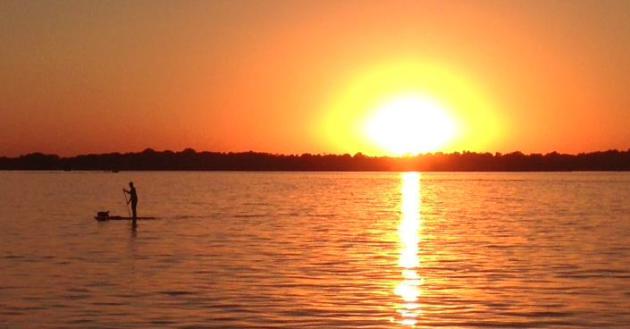

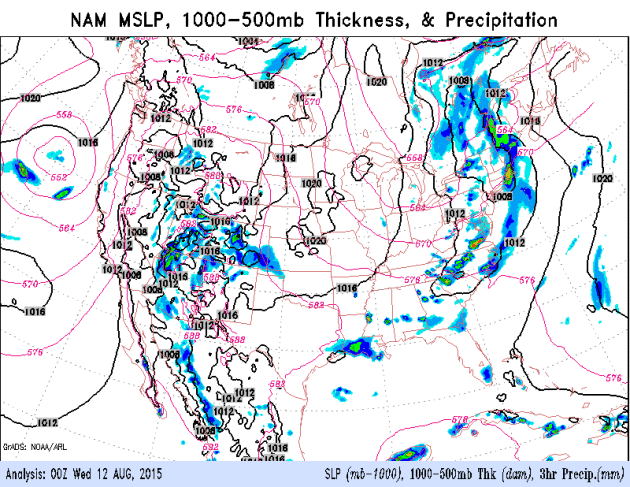
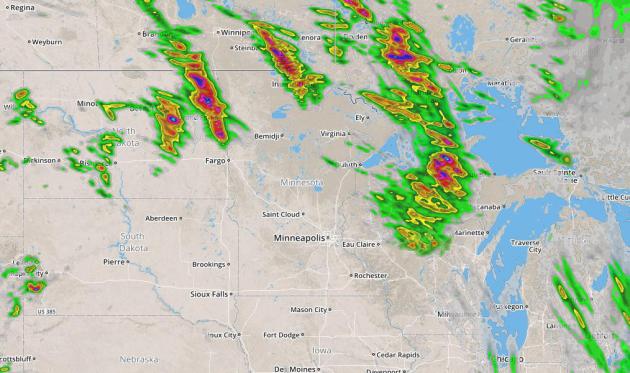




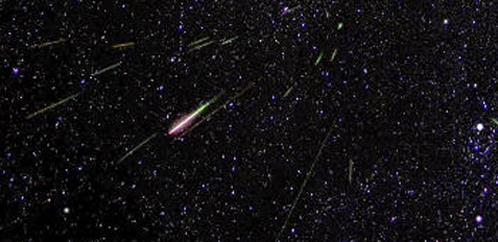

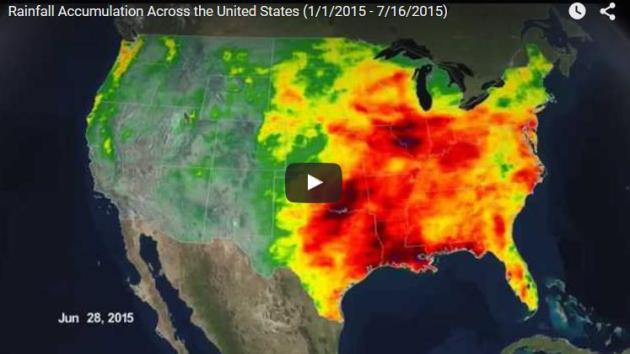

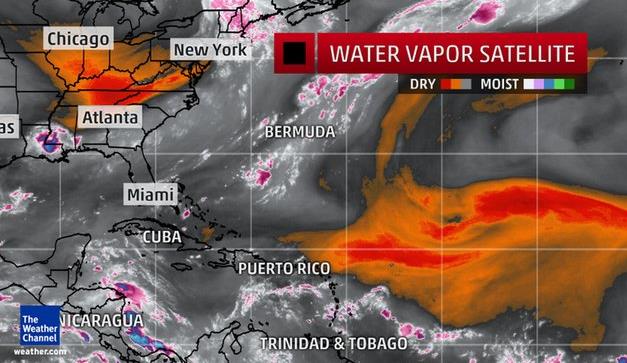
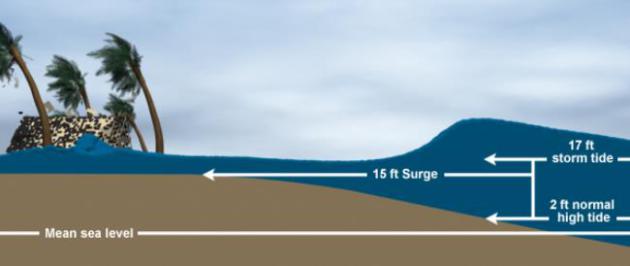
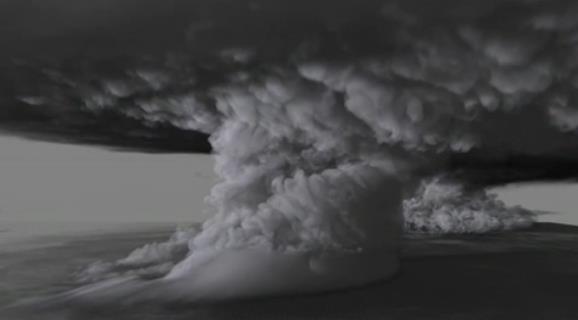
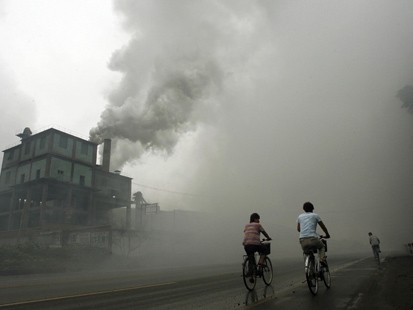
.jpg)


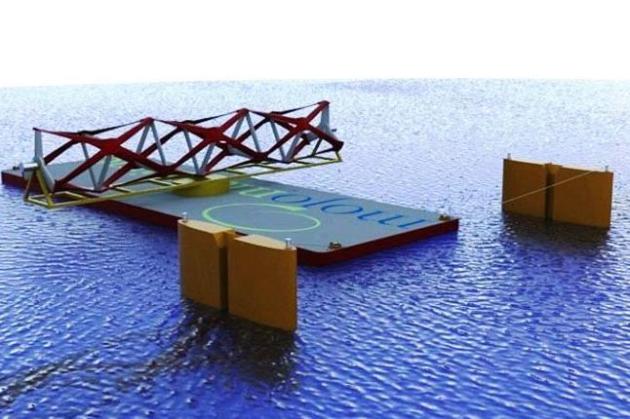


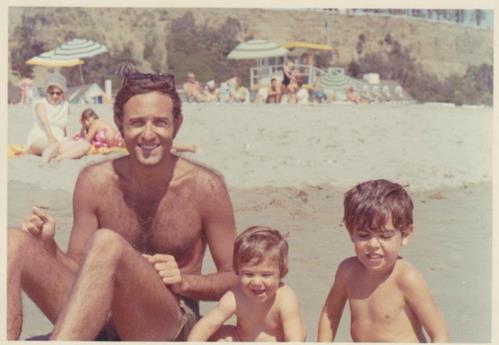


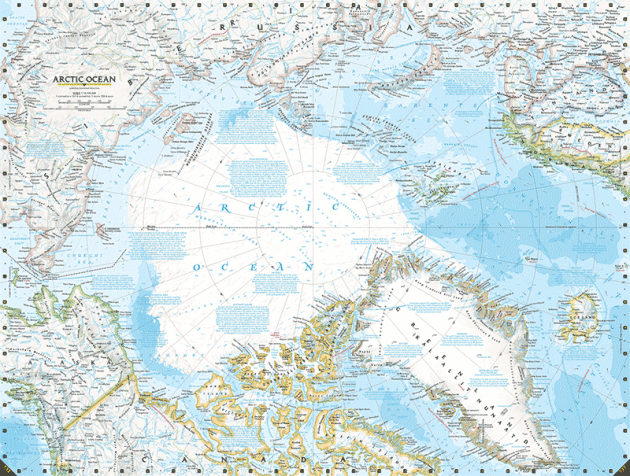
.jpg)

.jpg)
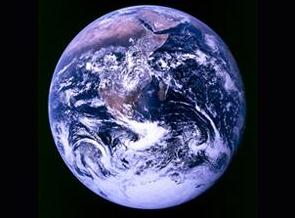
No comments:
Post a Comment